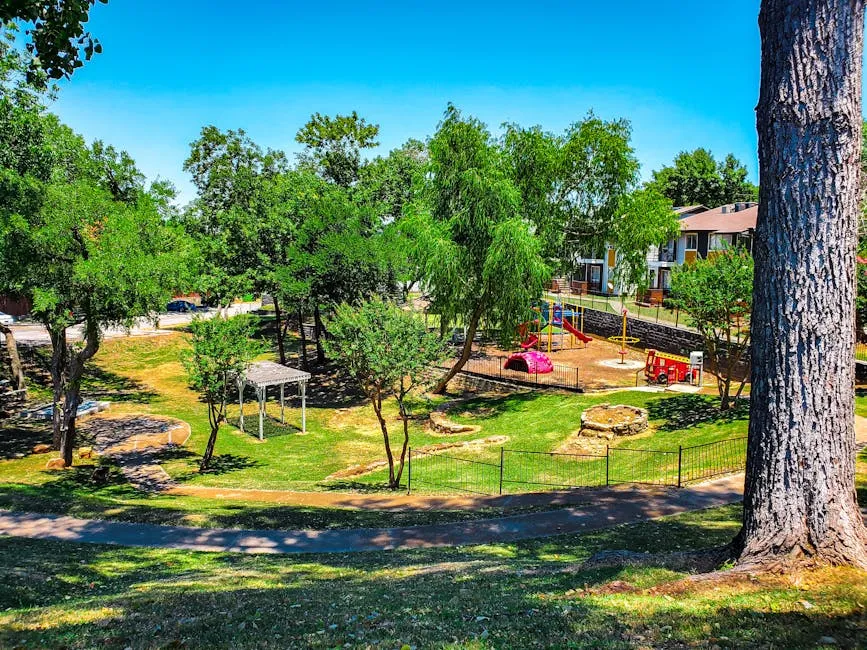Introduction
Welcome to St. Paul, Minnesota, a vibrant city nestled on the banks of the Mississippi River. Known for its rich history and cultural diversity, St. Paul is not just the state capital but also a hub for arts, education, and community spirit. However, like any city, it faces challenges, including crime. Understanding crime statistics is essential for residents, potential movers, and policymakers alike.
For residents, these statistics provide a snapshot of safety, helping them make informed decisions about their neighborhoods. For those considering a move, crime rates can greatly influence the choice of location. Meanwhile, policymakers can use this data to implement effective crime prevention strategies and allocate resources to improve community safety.
This article aims to provide a comprehensive analysis of crime statistics in St. Paul. We will look at both violent and property crime rates, comparing neighborhoods to highlight areas of concern and safety. Additionally, we’ll offer safety tips for residents and explore community sentiments regarding crime. By the end, you’ll gain a clearer picture of what living in St. Paul entails, crime-wise.

Understanding Crime Statistics
What are Crime Statistics?
Crime statistics are numerical representations of crime incidents within a specific area over a defined period. They include data on various crime categories, allowing us to identify trends and patterns. Understanding these statistics is crucial, as they help gauge the safety of communities and inform public policy.
Crime rates are typically calculated per 100,000 residents. This standardization allows for easy comparisons across different populations. Crimes are generally categorized into two main types: violent crimes, which include murder, rape, robbery, and aggravated assault, and property crimes, which encompass burglary, theft, and vandalism.
The FBI’s Uniform Crime Reporting (UCR) Program serves as a primary data source for these statistics, compiling information from law enforcement agencies nationwide. This program helps ensure consistency in reporting, enabling a reliable overview of crime trends.

Crime Rate Overview for St. Paul
St. Paul experiences a crime rate of 50 per 1,000 residents, one of the highest in the nation. To put this in perspective, your chance of becoming a victim of either violent or property crime here is approximately 1 in 20. When compared to the national averages, St. Paul’s crime rates stand out. For instance, the violent crime rate is 7.02 per 1,000 residents, significantly higher than the Minnesota state median of 2.81 and the national median of 4.
Property crime is even more prevalent, with a staggering rate of 42.60 per 1,000 residents, while the Minnesota state median is 19.67. These statistics paint a concerning picture for residents and visitors alike. The implications of high crime rates can lead to increased anxiety and a diminished sense of safety in the community. Understanding these figures is crucial for anyone living in or moving to St. Paul, as it enables better preparation and informed decision-making regarding personal safety and community engagement.

While you’re thinking about safety, consider adding an extra layer of protection to your home with a Wireless Alarm Security System. It’s a smart investment that not only deters intruders but also gives you peace of mind while you sleep. After all, a good night’s sleep is priceless!
For a deeper understanding of crime data, you can explore the Fremont crime statistics, which provide insights into safety trends in a different context.

Detailed Crime Rate Analysis
Violent Crime in St. Paul
St. Paul has faced its share of violent crime challenges. As of the latest data, the city reports a violent crime rate of 7.02 per 1,000 residents. This translates to a staggering total of 2,127 violent crimes occurring annually. These crimes include murder, rape, robbery, and aggravated assault. Specifically, the numbers break down as follows: 34 murders, 242 rapes, 413 robberies, and 1,438 aggravated assaults.
To understand the dynamics, let’s look at historical trends. Over the past decade, violent crime rates in St. Paul have fluctuated significantly. For instance, in 2016, the violent crime rate peaked, with 1,000 incidents reported. Since then, it has seen a downward trend, dropping by approximately 12% in recent years. While overall trends show improvement, certain types of violent crime remain persistent, posing ongoing challenges for law enforcement and community safety.
When we compare St. Paul’s violent crime statistics to state and national figures, the disparities are alarming. Minnesota’s state median for violent crime stands at 2.81 per 1,000 residents, while the national median rests at 4 per 1,000 residents. Clearly, St. Paul’s rates are considerably higher, highlighting a need for continued community engagement and effective policing strategies to address these serious issues.

While we discuss violent crime, if you’re a fan of thrilling narratives, you might enjoy Crime and Punishment by Fyodor Dostoevsky. This classic dives deep into the psychology of crime, making you ponder the very nature of justice while you sip your coffee.

Property Crime in St. Paul
Property crime in St. Paul is a pressing concern, with a property crime rate of 42.60 per 1,000 residents, leading to a total of 12,915 reported incidents. The types of property crimes prevalent in St. Paul include burglary, theft, arson, and motor vehicle theft. In particular, motor vehicle theft is notably high, with 3,189 incidents reported, which significantly impacts the community’s sense of security.
Analyzing year-over-year trends, property crime increased by about 3.3% recently, indicating a need for attention and preventive measures. For residents, this means that your chance of becoming a victim of property crime is roughly 1 in 23, a statistic that can induce anxiety and concern for safety.
Comparing property crime rates with nearby communities reveals stark differences. For instance, neighboring cities such as West St. Paul and Maplewood report significantly lower property crime rates of 6,971.7 and 286.5 per 100,000 residents respectively. This stark contrast raises questions about local factors contributing to crime spikes in St. Paul.

As you contemplate property safety, consider equipping your home with a Ring Video Doorbell Pro 2. This smart gadget allows you to see who’s at your door from anywhere, making it easier to keep unwanted visitors at bay. Plus, you’ll feel like you’re living in the future!

Crime Comparisons
Violent Crime Comparison
When we place St. Paul’s violent crime rate alongside the Minnesota state median of 2.81 and the national median of 4, the implications are clear. St. Paul’s rate is not just higher; it is nearly 150% above the state’s figures. This alarming statistic emphasizes the critical need for community programs and strategic policing to address the ongoing violence in the city.

Property Crime Comparison
For property crime, the story remains similar. St. Paul’s property crime rate of 42.60 per 1,000 residents dwarfs the Minnesota state median of 19.67 and the national average of 20. This stark contrast underscores the urgent need for improved community safety initiatives and crime prevention strategies.

Neighborhood Crime Rates
Crime rates vary significantly across St. Paul’s neighborhoods. For example, the Thomas Dale neighborhood is known for its high crime rate, reported to be 84% higher than the city average. In contrast, the Macalester-Groveland neighborhood boasts significantly lower crime rates, making it a safer choice for families and individuals seeking peace of mind.
The disparities between neighborhoods highlight the importance of localized crime prevention efforts. Engaging community members in safety initiatives can empower residents and help create a more secure environment. Overall, understanding the crime landscape in St. Paul is essential for residents, potential movers, and policymakers alike. By focusing on collaboration and proactive measures, the community can work towards a safer future for everyone.

Neighborhood Safety Rankings
Safest Neighborhoods in St. Paul
St. Paul boasts several neighborhoods where safety reigns supreme. According to the latest crime statistics, these areas show a lower incidence of crime, giving residents a peace of mind.
- Macalester-Groveland: Often hailed as the crown jewel of safety, Macalester-Groveland has a crime rate 62% lower than the city average. This neighborhood is known for its tree-lined streets and family-friendly atmosphere.
- Highland Park: With a crime rate also 62.7% lower than St. Paul’s average, Highland Park offers a mix of suburban charm and urban conveniences. Residents appreciate the parks and community events that foster connectivity.
- Como Park: This neighborhood is 53.2% safer than the city average, featuring beautiful lakes and the Como Park Zoo. Families love this area for its recreational opportunities and strong sense of community.
- Summit Hill South: Known for its historic homes and vibrant community, this area benefits from a low crime rate, making it an attractive choice for those seeking safety and charm.
- University of St. Thomas: Home to the university of the same name, this neighborhood is not just educationally rich but also boasts lower crime statistics, providing students and families a secure environment.
- Pine Springs: This suburban enclave features a peaceful atmosphere, with crime rates significantly below the city average, making it ideal for those who prefer a quiet lifestyle away from the hustle and bustle.

Highest Crime Areas
Conversely, some neighborhoods face higher crime rates. Understanding these areas can help residents remain vigilant and informed.
- Thomas Dale: This neighborhood reports crime rates 84% higher than the St. Paul average. Factors contributing to this include socioeconomic challenges and a higher population density, leading to more interactions that can escalate into crime.
- Downtown St. Paul: While vibrant and full of life, this area experiences a crime rate 78% above the city average. The influx of tourists and nightlife can contribute to higher rates of petty crimes and disturbances.
- Dayton’s Bluff: Known for its historic appeal, this neighborhood still grapples with crime rates 62% higher than the city average. Community efforts are in place to improve safety and foster a sense of belonging among residents.
- North End: This area also sees crime rates 43% higher than average, often linked to economic disparities and transient populations.
- Payne-Phallen: With a crime rate 21% higher than St. Paul’s average, this neighborhood is working towards revitalization, involving community initiatives to enhance safety.

Understanding these high-crime areas allows residents to make informed decisions about their daily routines and community involvement, fostering areas where safety can improve through collective effort.
Community Sentiment
Community sentiment regarding safety varies significantly among residents. A recent survey indicates that 22% of residents feel very safe walking alone at night, while a significant 78% express concerns over crime levels.
One resident from Highland Park remarked, “I love living here. The community is tight-knit, and I always feel secure, even at night.” Meanwhile, a resident from Thomas Dale voiced, “I’m always on edge. I avoid walking alone after dark.”
These sentiments highlight the disparity in perceptions based on neighborhood safety. Engaging in community programs and neighborhood watch initiatives can bridge the gap between concerns and safety, ultimately fostering a more secure environment for all.

Safety Tips for Residents
Staying safe in St. Paul requires vigilance and community cooperation. Here are some practical tips for residents:
- Stay Aware: Always be mindful of your surroundings, especially at night. Avoid distractions like using your phone while walking.
- Travel in Groups: Whenever possible, move in groups, particularly during nighttime outings. There’s safety in numbers.
- Secure Your Home: Lock doors and windows, and consider installing security systems or outdoor lighting to deter potential intruders.
- Neighborhood Watch Programs: Get involved with local neighborhood watch programs. These initiatives foster community spirit and encourage residents to look out for one another.
- Report Suspicious Activity: If you notice anything unusual, don’t hesitate to report it to the local authorities. Timely reporting can prevent potential crimes.
- Engage with Local Police: Attend community meetings with law enforcement to stay informed about crime trends in your area. Building relationships with officers can enhance community safety.
- Community Resources: Take advantage of local safety resources, including police-led safety workshops and community events that promote awareness and prevention.

By implementing these tips and actively participating in community safety initiatives, residents can play an essential role in fostering a secure environment in St. Paul.
And speaking of securing your home, have you thought about investing in a Smart Lock for Home Security? With keyless entry, you’ll never have to fumble with keys again! Plus, it gives you the ability to monitor who enters your home, making it a must-have for the tech-savvy homeowner.
The Role of Law Enforcement
Overview of the St. Paul Police Department
The St. Paul Police Department (SPPD) plays a vital role in maintaining safety in the city. With nearly 550 dedicated officers, the department works tirelessly to protect residents and foster community trust. Chief Axel Henry leads the department in implementing innovative safety initiatives and community engagement programs.
SPPD actively collaborates with local organizations and residents to enhance safety. Monthly community meetings provide a platform for citizens to voice concerns and discuss crime trends. This open dialogue fosters a sense of partnership between law enforcement and the community. SPPD also participates in various outreach programs, including youth mentoring and crime prevention workshops, aimed at building strong community ties.

Crime Prevention Strategies
To combat crime effectively, the St. Paul Police Department employs a multi-faceted approach. One of their primary strategies is community policing. Officers are assigned to specific neighborhoods, fostering relationships and trust. This presence deters crime and encourages residents to report suspicious activities.
Another key strategy is crime mapping. By analyzing crime data, the department identifies hotspots and allocates resources where they are needed most. This data-driven approach ensures that law enforcement can respond effectively to emerging issues.
SPPD also emphasizes crime prevention education. They host workshops on personal safety, home security, and neighborhood watch programs. By equipping residents with knowledge, the department empowers them to take an active role in their safety.
Finally, collaboration with other agencies enhances their efforts. For instance, partnerships with social services help address underlying issues contributing to crime, such as poverty and addiction. By tackling these root causes, SPPD aims to create a safer community for all residents.

Conclusion
In summary, understanding crime statistics is essential for anyone living in or moving to St. Paul. The city faces significant challenges, as evidenced by its higher-than-average crime rates. However, the commitment of the St. Paul Police Department to community engagement and crime prevention strategies is commendable.
By actively involving the community in safety initiatives, residents can play a crucial role in improving their neighborhoods. Sharing information, attending community meetings, and promoting local safety programs can create a strong network of support. When residents and law enforcement work together, the potential for positive change increases.
Knowledge of crime statistics empowers residents to make informed decisions. Whether considering a move or evaluating safety measures in their current neighborhoods, understanding these figures is vital. Engaging with local law enforcement and participating in community initiatives can further enhance safety. Together, St. Paul can become a safer, more vibrant city for everyone.
FAQs
Is St. Paul a safe city?
Safety perceptions in St. Paul can be a mixed bag. While some neighborhoods shine like a well-polished apple, others may resemble a bruised one. According to recent statistics, St. Paul has a crime rate of 50 per 1,000 residents. This means your chance of being a victim of crime is about 1 in 20. Many residents express concerns about crime, with 78% feeling anxious about safety. However, it’s essential to remember that safety varies by neighborhood. Areas like Macalester-Groveland and Highland Park are often considered safe havens, while neighborhoods like Thomas Dale can be a bit more concerning.
What neighborhoods are the safest in St. Paul?
St. Paul boasts several neighborhoods where residents feel secure. Here are some of the safest areas based on crime statistics: – Macalester-Groveland: Known for its tree-lined streets and family-friendly environment, this neighborhood has a crime rate that is 62% lower than the city average. – Highland Park: With a crime rate also 62.7% lower than St. Paul’s average, this area combines suburban charm with urban amenities. – Como Park: This neighborhood, featuring beautiful parks and a zoo, is 53.2% safer than the city average, making it ideal for families. – Summit Hill South: Known for historic homes, this area offers both charm and safety, attracting those seeking tranquility. – University of St. Thomas: Home to the university, this neighborhood maintains lower crime statistics, providing a secure environment for students and families. These neighborhoods illustrate how community engagement and proactive policing contribute to a lower crime rate.
How does St. Paul compare to Minneapolis in terms of crime?
When comparing St. Paul to its neighbor Minneapolis, the crime landscape reveals stark contrasts. St. Paul’s violent crime rate stands at 7.02 per 1,000 residents, while Minneapolis boasts an even higher rate of 9.48 per 1,000 residents. Property crime rates follow a similar pattern, with St. Paul at 42.60 per 1,000 residents compared to Minneapolis’s 61.82. While both cities face challenges, St. Paul shows a slightly lower crime rate overall. However, both cities share common concerns that necessitate community engagement and law enforcement efforts.
What should I do if I’m a victim of crime in St. Paul?
If you find yourself a victim of crime in St. Paul, don’t panic! First, ensure your safety. If you’re in immediate danger, call 911. For non-emergency situations, report the crime to the St. Paul Police Department at (651) 291-1111. They can provide assistance and initiate an investigation. Additionally, consider reaching out to victim support services. Organizations like the Minnesota Alliance on Crime offer resources such as counseling and legal assistance. Remember, you’re not alone, and help is available.
How can I stay informed about crime in my neighborhood?
Staying informed about local crime trends is crucial for personal safety. Residents can utilize several resources: – St. Paul Police Department website: The department provides regular updates on crime statistics and safety tips. – Crime Mapping Tools: Interactive crime maps are available online, allowing residents to see crime incidents in real-time. – Neighborhood Watch Programs: Joining or starting a neighborhood watch can foster communication about local safety concerns. – Community Meetings: Attend meetings held by local law enforcement to discuss crime trends and share concerns. By staying engaged and informed, residents can take proactive steps to enhance their safety and that of their community.
Please let us know what you think about our content by leaving a comment down below!
Thank you for reading till here 🙂
And while you’re at it, why not check out the Blu-ray of The Godfather? It’s not just a film; it’s a cultural phenomenon. Plus, who doesn’t love a good mobster story while contemplating the complexities of crime?
All images from Pexels




